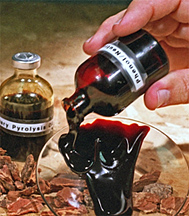Seven winners of the People, Prosperity and Planet (P3) competition were announced as part of the U.S. Environmental Protection Agency’s (EPA) 10th annual National Sustainable Design Expo recently held in Washington, D.C. The phase II awards are for innovative and sustainable designs created to help solve today’s environmental problems.
 “As we mark the 10th year of the National Sustainable Design Expo and P3 competition, we continue to be inspired by the next generation of scientists and engineers shaping the future of our country,” said Bob Perciasepe, U.S. EPA Deputy Administrator. “These students support a vision for the future that encourages a prosperous economy while seeking sustainable and creative solutions to some of the most pressing environmental and health challenges facing our world.”
“As we mark the 10th year of the National Sustainable Design Expo and P3 competition, we continue to be inspired by the next generation of scientists and engineers shaping the future of our country,” said Bob Perciasepe, U.S. EPA Deputy Administrator. “These students support a vision for the future that encourages a prosperous economy while seeking sustainable and creative solutions to some of the most pressing environmental and health challenges facing our world.”
EPA’s P3 Program challenges student teams to create designs for a sustainable future while offering quality hands-on experience that brings science, technology, engineering and math (STEM) classroom learning to life. This year’s winners were selected from 35 competing teams following two days of judging by a panel of national experts convened by the American Association for the Advancement of Science. Each award-winning team is recommended for a grant of up to $90,000 to further develop their design, apply it to real world situations, and bring it to the marketplace.
Winners of this year’s awards are:
- Cornell University, New York, for designing a low-cost monitor for measuring water quality.
- Embry-Riddle Aeronautical University, Florida, for designing an innovative air conditioning system that runs on solar power.
- Iowa State University for designing a new kind of fabric made with fibers from bacteria and yeast grown in tea and polymers of corn and soy.
- Purdue University, Indiana, for researching how to improve indoor air quality by using plants grown in the air filter of a home HVAC system.
- SUNY Stony Brook, New York, for designing and building Poseidon, an ocean energy harvester that converts wave motion into electrical energy.
- University of Tennessee, Knoxville, for exploring ways to use green oak or “heart centers,” the low-quality part of hardwood logs in U.S. building construction.
- University of Wisconsin, Madison, for implementing a campus recycling program for expanded polystyrene packaging thereby diverting almost 2000 boxes and other polystyrene material from landfills in 6 months of operation.
In addition to the seven winning team, 17 teams were recognized as Honorable Mentions for their project quality inspiring innovation for environmental solutions.









